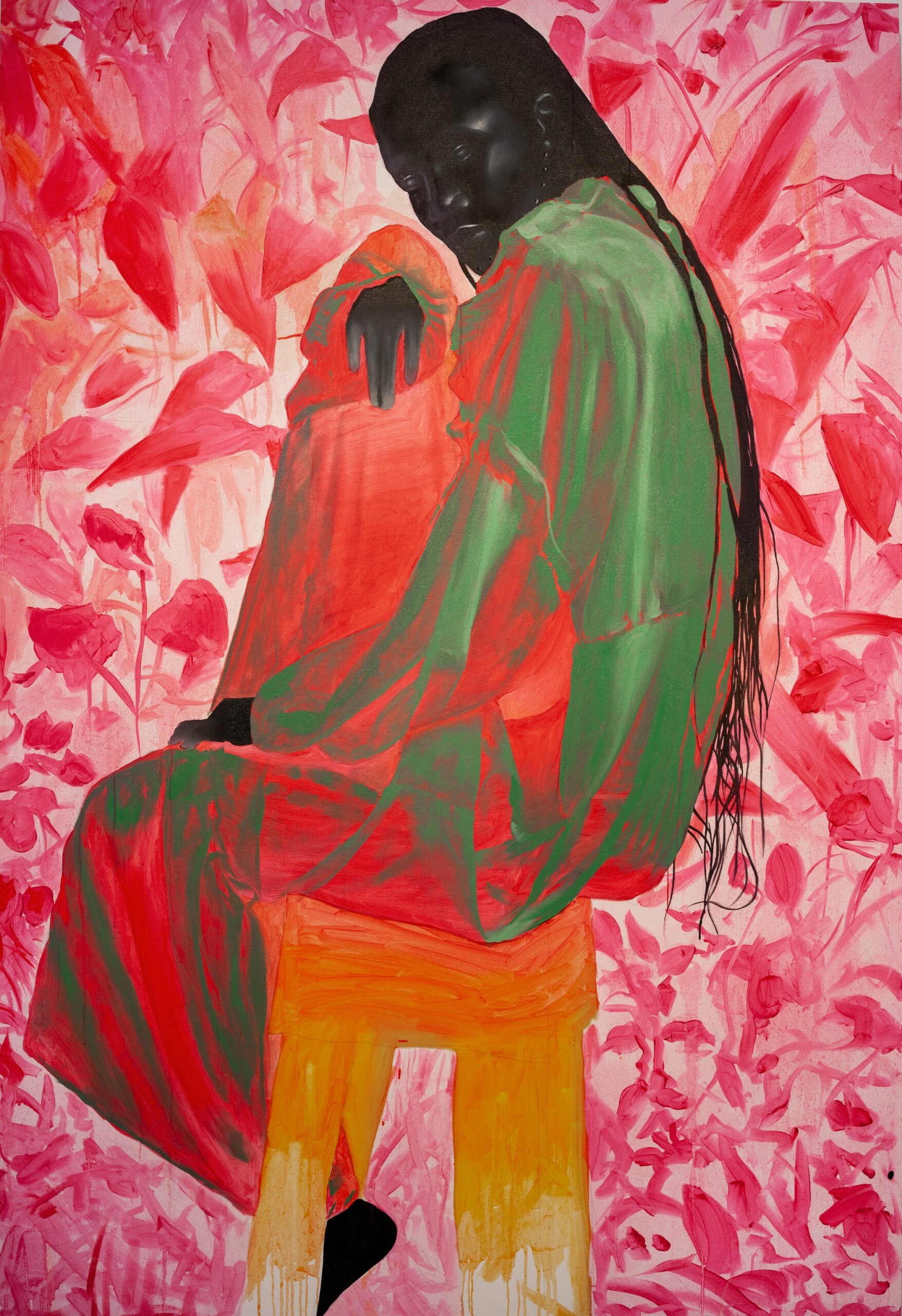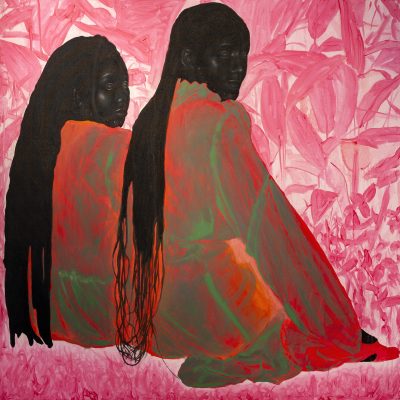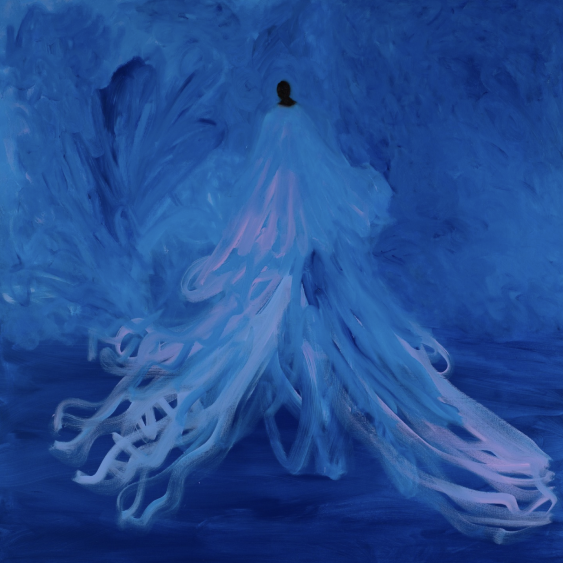Re:View
An uninterrupted perception of the self
with Peter Ojingiri
Share






A self taught artist based in Nigeria, Peter Ojingiri’s practice studies the ways West African Folklore and anti colonial theory manifest on the continent and in the diaspora. Featured in this week’s Re:View is a reading of Ojingiri’s exhibition Encountering the Disrupted pt 2 at Gallery 1957 in London.
In the conventional sense, horror has referred to a genre in film and literature that looks to evoke fear and a terror of the unknown and supernatural. A more sinister approach, horror noire depicts the absurdly terrifying lives that black people live as a result of systemic racism and inherited trauma. First cited in 2011, the term is taken from Dr Robin Means Coleman’s book Horror Noire: Blacks in American Horror Films from the 1890s. Platforming cyclical, unbearable horrors like migration, displacement, erasure, isolation and objectification, the genre has been presented in several films including Mati Diop’s Atlantique, His House directed by Remi Weekes, as well as Jordan Peele’s Get Out and Nope. So instead of guts, gore, ghosts and demons, writers and directors delve into documenting lived realities to keep their audiences up at night.
Enter Peter Ojingiri and his series Encountering the Disrupted pt 2. A subversion of the Horror Noire focused political commentary seen in the mainstream, Encountering the Disrupted pt 2 transcends the terror to delve into a more detailed study. Instead of giving in to the mainstream urge of making a spectacle out of colonial wounds, Encountering the Disrupted pt 2 documents the artist’s attempt to connect to and from sincere attachments with the affected.
Then seeking to position the series as a form of speculative fiction, Ojingiri employed magenta for the colour’s fantasy qualities. A vivid colour, Ojingiri says the colour “gives the illusion of light and glow that I wanted to achieve in the paintings” before adding that it’s his “attempt to create a space that nudges the questions about who and where the subjects are”.
Acknowledging Nigeria, Ojingiri’s disrupted subjects exist in a meta-garden. Adorned with vegetation characteristic to Nigeria against the glowing magenta sky, the garden represents Nigeria’s “chaos and beauty” without limiting the disrupted subjects to the locale. Removed from their lived contexts, the audiences have the opportunity to encounter the individuals beyond the things they are subjected to.
Looking to imagine an Africa beyond imperialist and colonial violences while building a figuration that doesn’t make a spectacle of blackness, he depicts his speculative subjects with Benin Bronze-like visages.
A double-edged sword, the masks offer the disrupted an anonymity that protects them from becoming a spectacle in addition to being a visual comment on uniformity that comes as a result of losing one’s identity.
While sculpted with realistic attention, Ojingiri’s disrupted are almost dipped in a metallic rendering that makes them glisten. A manifestation somewhere between existing Nigerian people and the idea of what they could have been had they gone uninterrupted, Ojingiri’s figurations are dedicated to connect the ones who evaded enslavement with those who were subject to it.
Subscribe
Subscribe
For exclusive news, tickets and invites delivered every week


